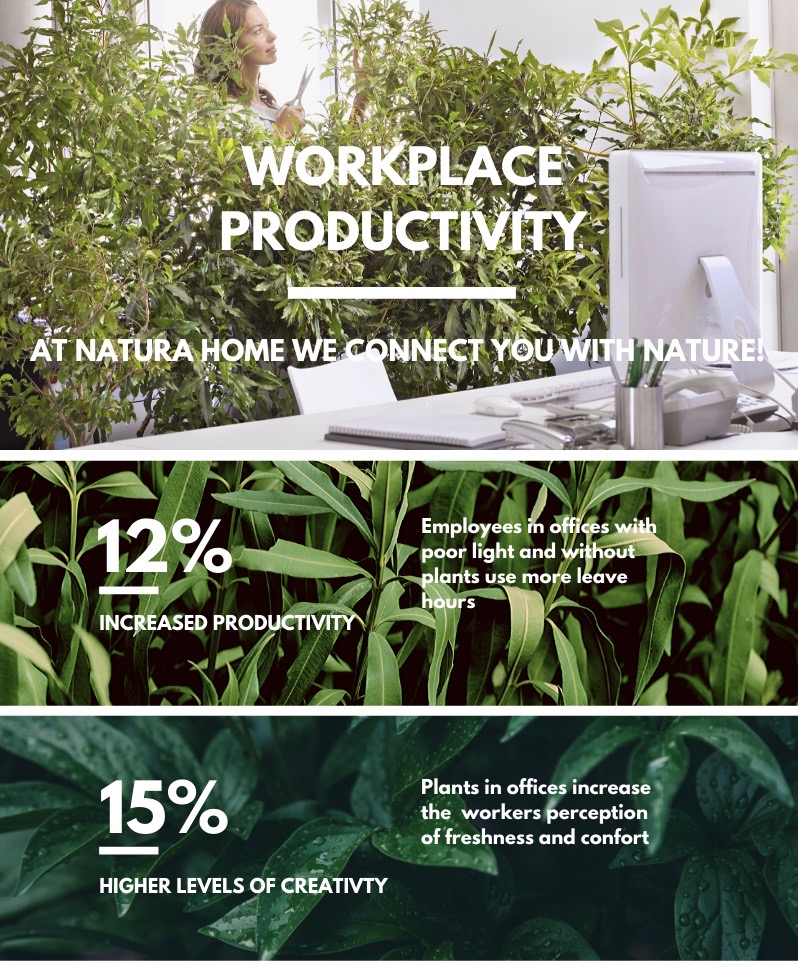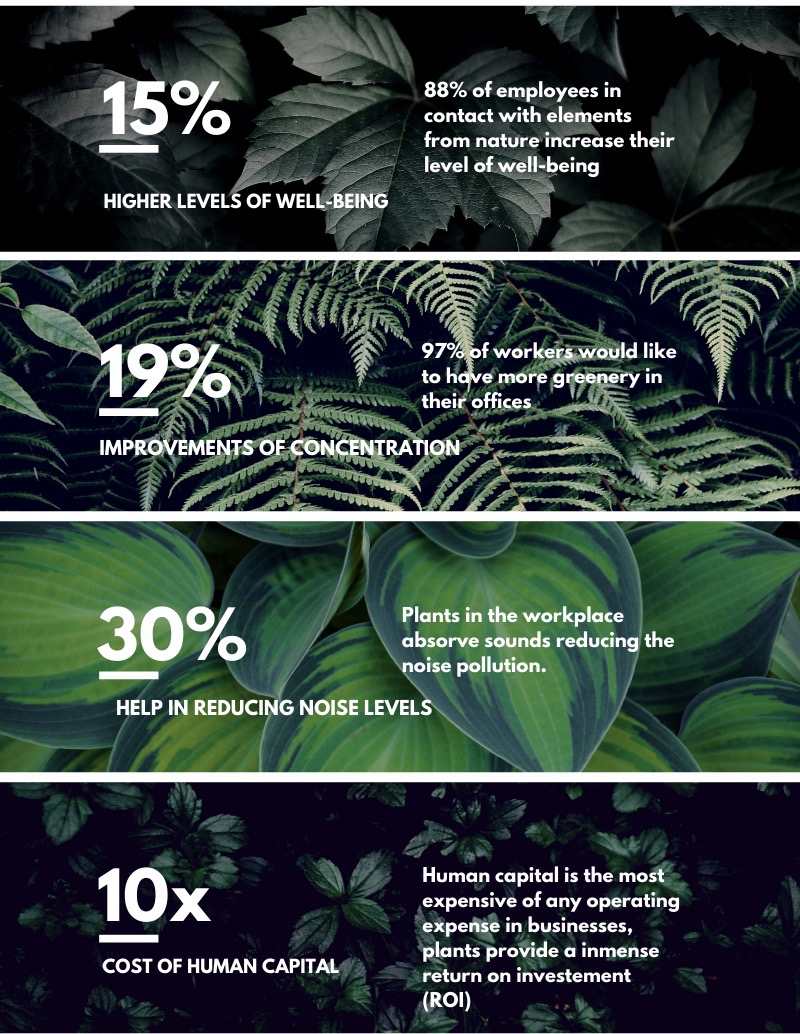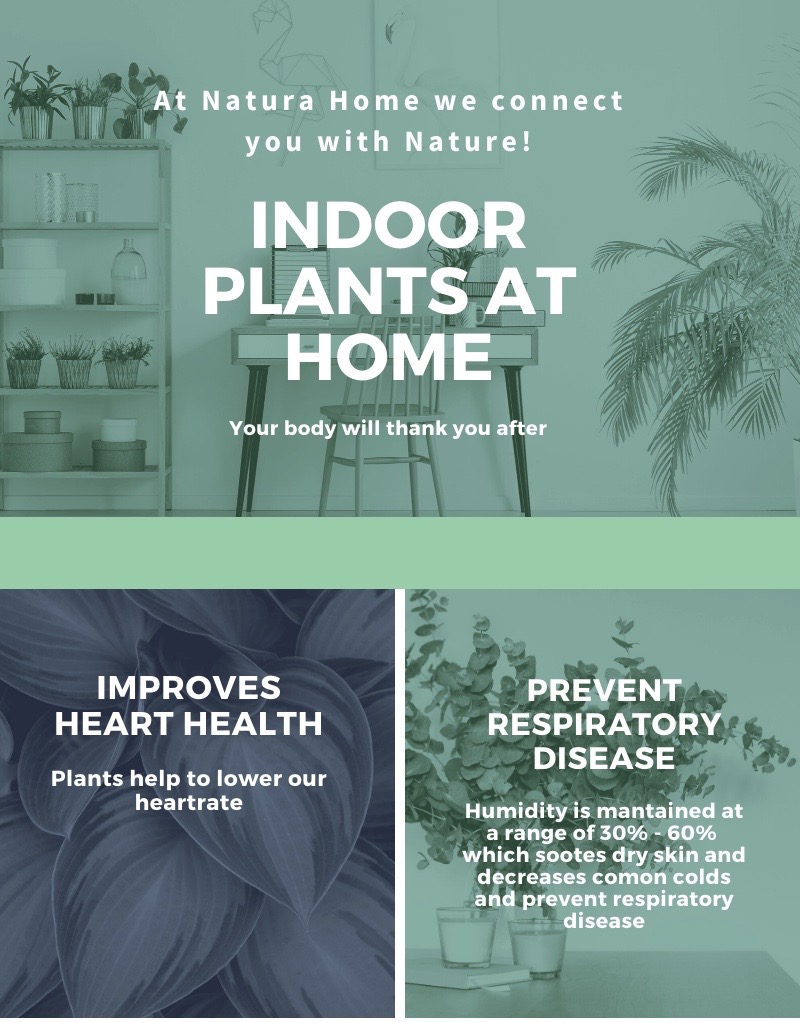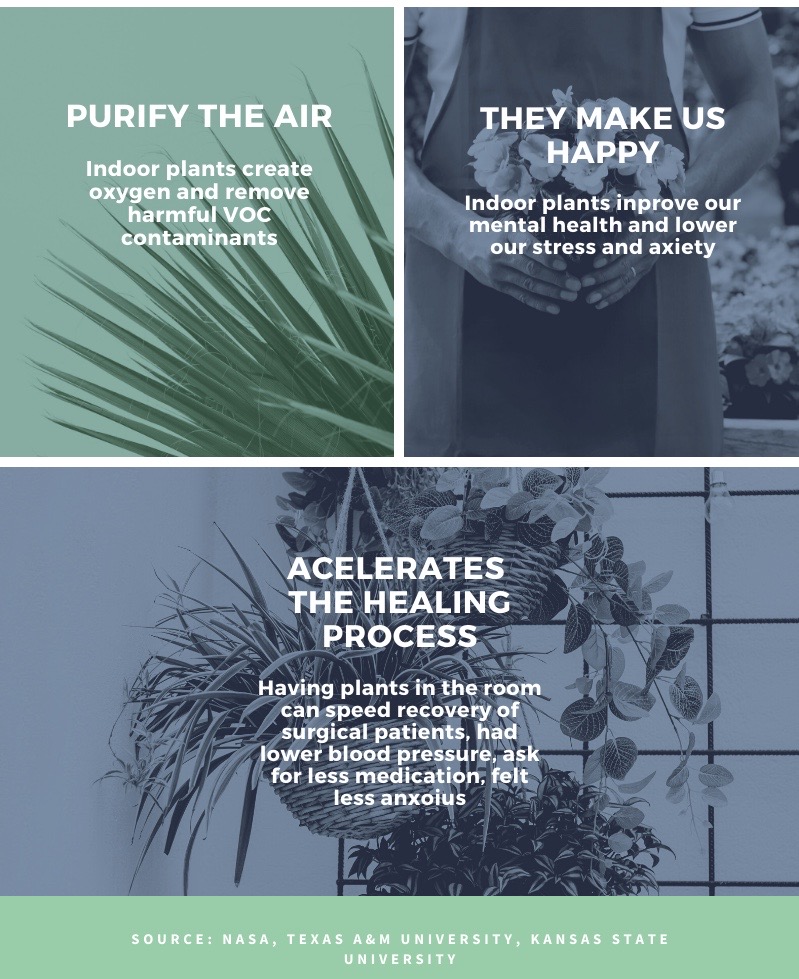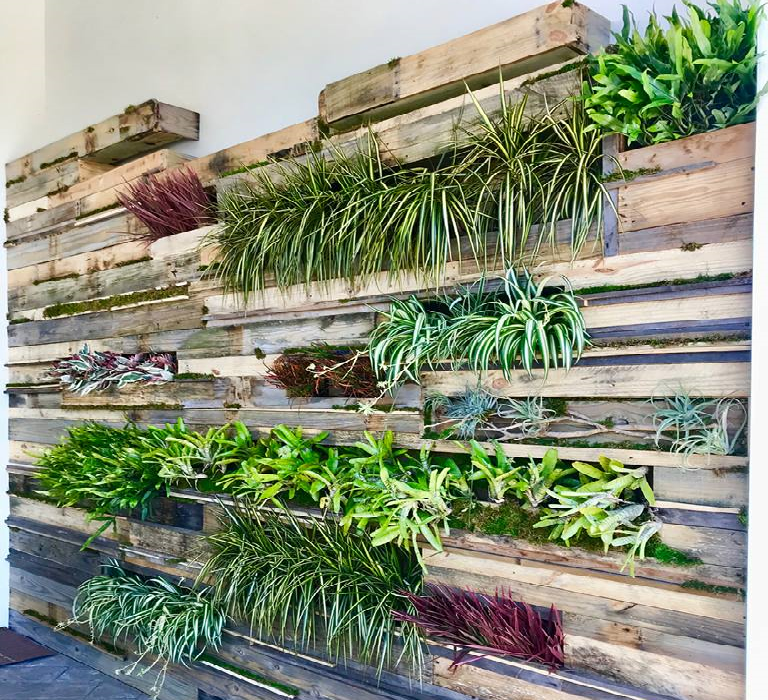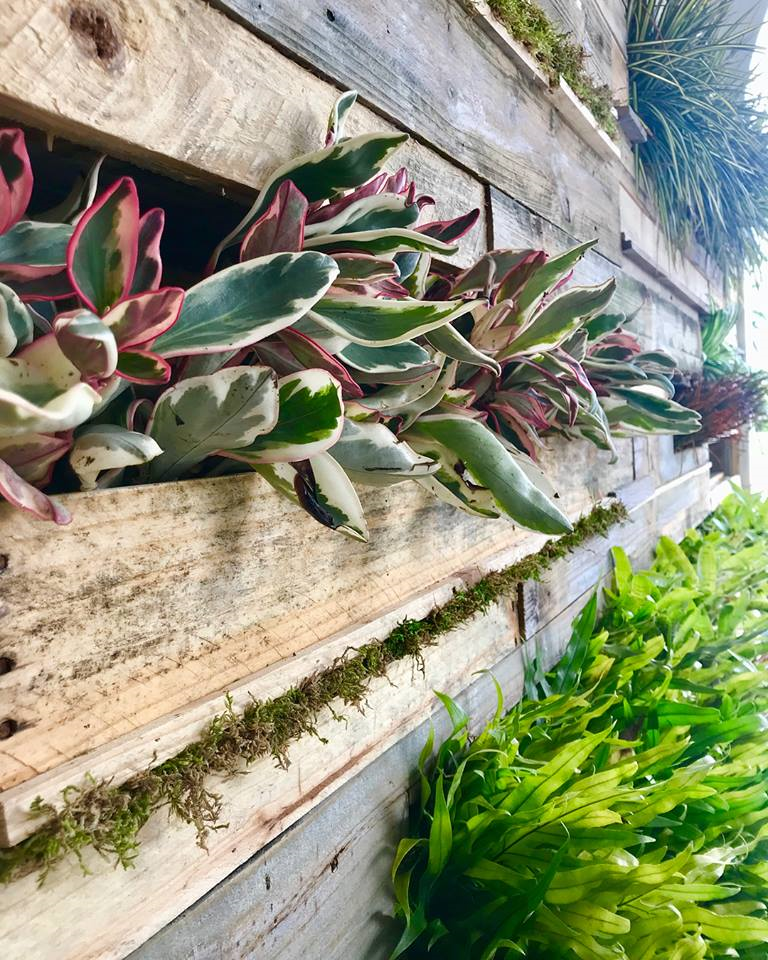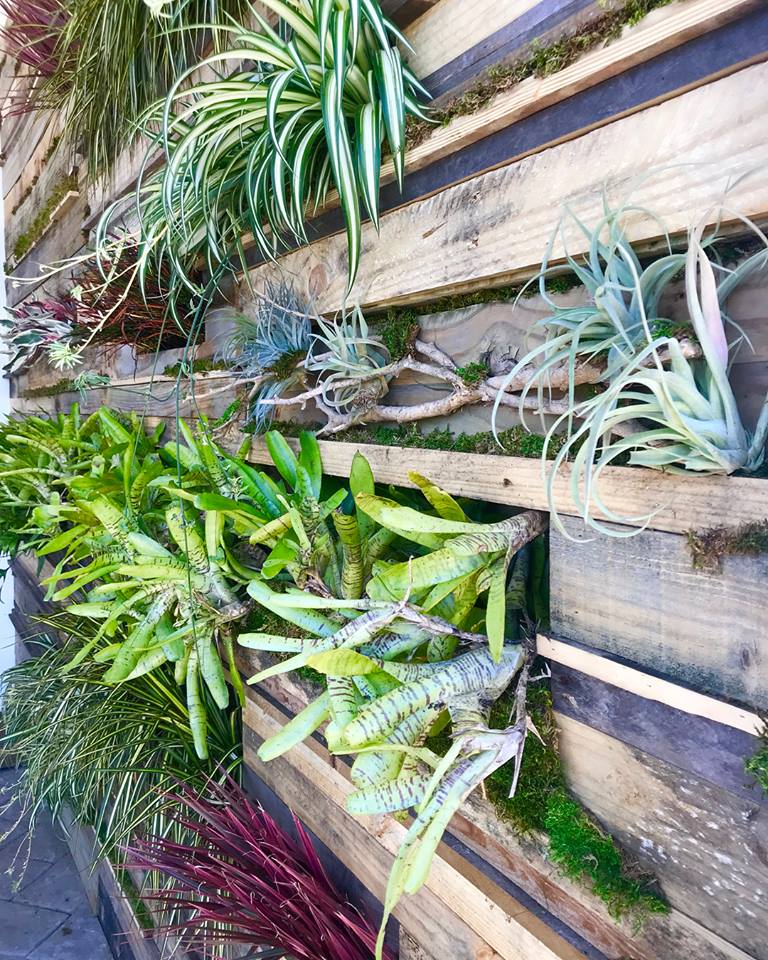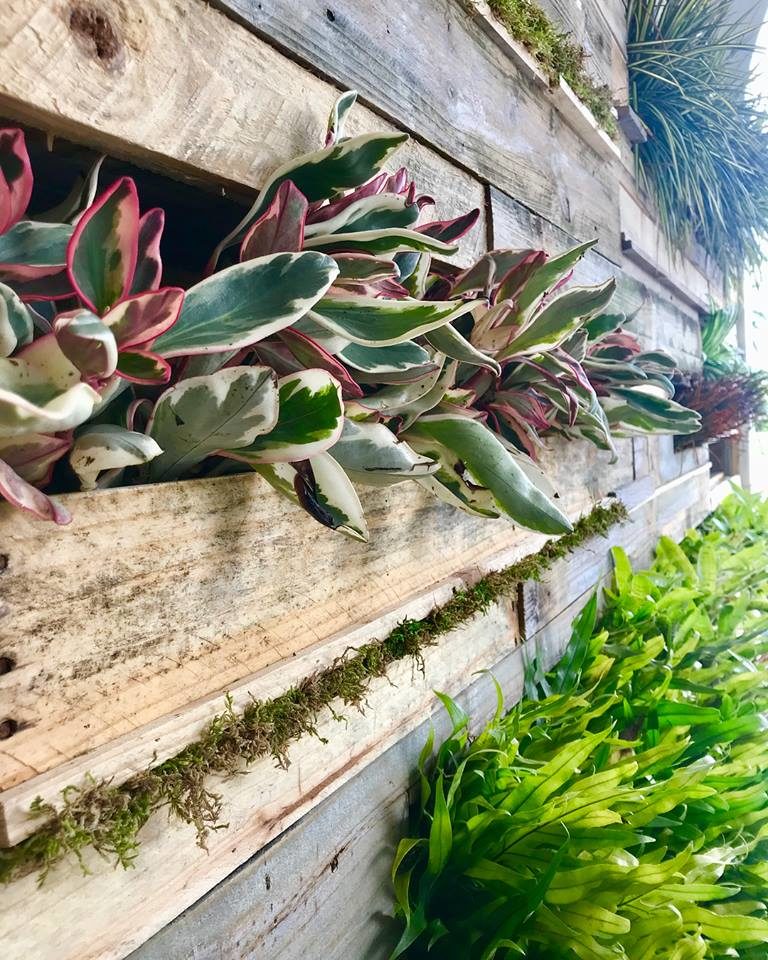Coronavirus is changing the way we are designing offices
Before the Coronavirus there were many studies showing that plants can add more to an office than a decorative touch. So now more than ever we need to change the way we design offices that we can create healthier spaces.
Indoor plants can improve your memory and concentration. The College of Agriculture and Life Science at Texas A&M University found that, “Work performed under the natural influence of ornamental plants is normally of higher quality and completed with a much higher accuracy rate than work done in environments devoid of nature.”
Research consistently finds adding plants to the workplace decreases stress and increases productivity.
A UK study found bringing plants into the workplace increased productivity by 15%. Meanwhile, a US study found 10% of employee sick days could be explained by a lack of nature and natural light in the office.
Just being able to see nature has proven impacts too. In an analysis of 10 UK studies, every paper found greenery had a positive effect on mood. It also found being around nature gave a big live to self-esteem, especially in young people.
To choose the right plant for your office, you should first assess how much light the space gets. You identify if the windows are west-facing (which will get plenty of sunlight) or if you should be looking for varieties that cope well in the shade.
Next, decide what you want your plant to bring to the workspace. Aesthetically, plants play three main roles: “They can fill a space, they can frame a space or they can follow a space.” This will help determine the size, shape and density of foliage you should go for.
If you need advice just contact us!
Coronavirus is changing the way we are designing homes
Before the Coronavirus there were many studies showing that plants can add more to an office than a decorative touch. Now with the promise of more indoor time you might want is getting a bit more of nature in our homes.
There are studies that suggest that we all have a genetic connection to the natural world built up through hundreds of thousands of years of living outdoors.
Incorporating direct or indirect elements of nature into the built environment have been demonstrated through research to reduce stress, blood pressure levels and heart rates, whilst increasing productivity, creativity and self reported rates of well-being.
If you know me, this is what I do, I reconnect my client’s spaces to the natural world! If you are interested to create a healthier and more productive habitat just contact me!
Here are five ways houseplants can help you maintain your health!
We don’t have to wait until April 22nd to celebrate Earth. Every day, we can reduce, reuse, and recycle.
Plastic is an amazing, lightweight material that can be made into all sorts of things. But when we use plastic items once and then throw them out, we create a huge amount of waste. People create about 2.6 trillion pounds of garbage each year. That’s heavier than 225 million adult elephants. In the United States, we throw away 250 million tons of garbage every year. That’s enough garbage to cover the state of Texas entirely with trash—twice. On average, each person in the United States makes 4.5 pounds of trash each a day.
Each of us can make a difference by using good judgement when we buy and discards things.
- When we reduce, reuse, and recycle, we:
- Save natural resources
- Save space in our landfills
- Save energy
- Reduce pollution
- Save money
Using reclaimed wood is a very sustainable approach. Old wood, such as barn board can be re-finished and cut to make new wood flooring, kitchen cabinets, or cladding.
You could also choose to use recovered wood from trees that have been cut down for other purposes; for example, clearing forest for building land. In this case, you can achieve perfect consistency in your finished product while knowing that the wood you’re using would otherwise have gone to waste.
Of course, both the options above are likely to be limited and harder to find than wood that comes from trees specifically harvested for that purpose. The next best option is to look for wood that is guaranteed to be sustainably sourced, and ideally, is sourced locally. The Forest Stewardship Council (FSC) and Sustainable Forestry Initiative (SFI) both have certification schemes for wood from sustainably managed forests.




